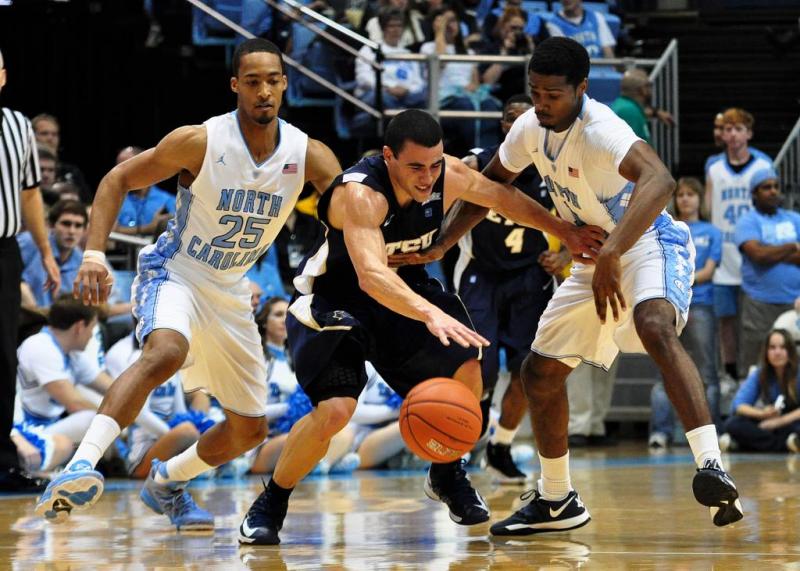Something Off with North Carolina
220, 1; 204, 1; 210, 10; 196, 1; 174, 1; 173, 1.
Listed above are the block totals and subsequent regular season finish in the ACC of the past half dozen Carolina Tar Heels teams. Other than the outlier 2009-2010 season, blocking a ton of shots has been paramount in UNC’s on-court success in recent years. Not since the Sean May era in the early part of the decade has Carolina been consistently good without a big-time shot blocker.
The past two teams were led by John Henson and Tyler Zeller, two long and athletic bigs who collected awards during their time at Chapel Hill. When they were young and not yet developed on the court, Deon Thompson and especially Ed Davis were the centerpieces of the interior defense. And before them, Brandon Wright had the title as North Carolina’s inside presence.
Other than the 10th place conference finish (where UNC still won 20 games by the way), every one of the five other seasons, UNC collected around 5 or 6 blocks per game and finished with the best record in the ACC. The two are directly linked. Carolina under Roy Williams likes to run and push tempo. Altering and rejecting shots on the defensive end is one of the easier ways to lead to run-outs on the offensive side of the ball. Also, in more simple terms, when a shot is blocked, that means it did not go in. Instead of relying on the opponent to miss, Carolina had been taking matters into their own hands…until this season.
The 2012-2013 Tar Heels have no inside presence whatsoever. The team’s leading shot blockers are currently bit-players Brice Johnson and Desmond Hubert. The backup big men each average less than one block per game and play under 15 minutes per outing. Neither is exactly striking fear in the minds of opponents. This is one of the main reasons Carolina will underachieve this season.
Their start has been fine thus far. Conference play has not yet begun so UNC has not really played anyone yet. They had two tougher games, against Butler and Indiana, and lost them both, including getting blown out by Indiana. But November success or failure is not always indicative of season outcomes. The real problem for UNC has not been those two games’ results, but the underlying reasons behind the losses: they have no one inside.
This is not North Carolina’s only weakness. Freshman point guard Marcus Paige does not push the ball like Roy Williams’ water bug point guards of recent memory. The team’s leading scorer, James Michael McAdoo, does not really have a post-up game; he is more of a face-up shooter and scorer even when venturing down low. And, perhaps most problematic of all on offense, the team relies on a lot of outside shooting. This may come back to bite them a number of times in ACC play.
However, even with all those limitations, Carolina is still scoring a lot (currently third in the nation at 84.4 points per game to be exact). The problem is on defense and the problem is inside. There is no one in the paint to scare opponents. Opposing guards feel like they can get to the rim anytime they squeak by their on-ball defender. When, in the past, a John Henson or Ed Davis would be waiting to turn away any floater or layup from a cutting guard, now these shots are undeterred. McAdoo is certainly the team’s best front court player but blocking shots and disrupting down low is not his game. It may be Brice Johnson’s game but, at the moment, he is not the all-around player to get starter’s minutes, as he has not shown the ability to play without fouling. Just a freshman, his game may come along by the end of the season but that won’t help Carolina stop people in the coming weeks.
125, 4, as in 125 team blocks, 4th place finish in the ACC.
That may be where we are headed for North Carolina this year.

